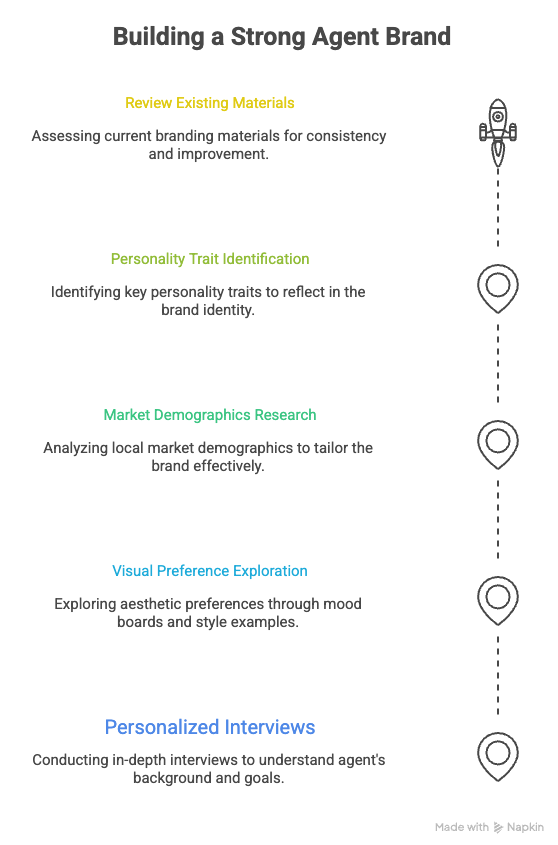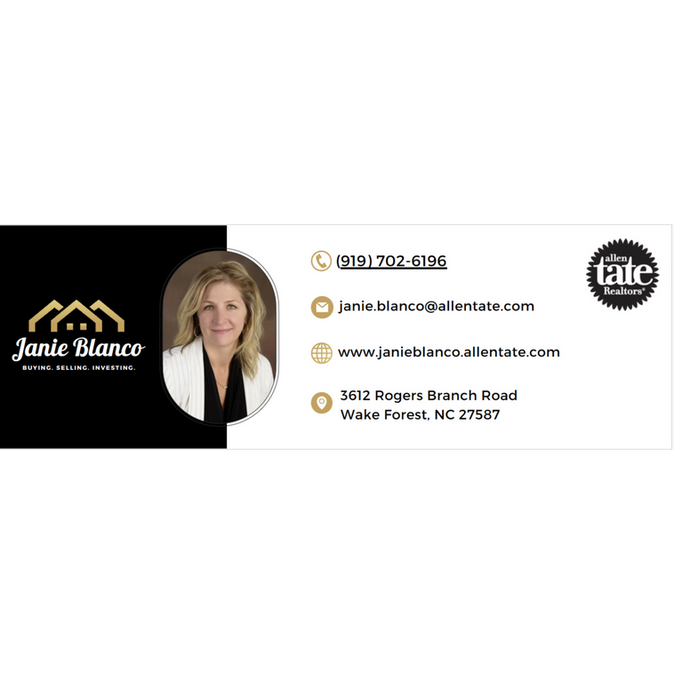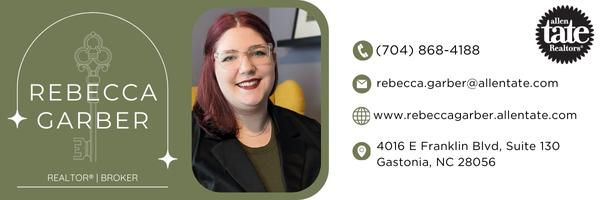Allen Tate —
Agent Branding Identities
Custom Brand Identity Systems | Personalized Logo,
Print + Digital Collateral
Role: Lead Graphic Designer | Year: 2023-2024

Overview
The Allen Tate Agent Branding program was developed to empower agents with personalized, professional brand identities that complemented the overarching Allen Tate visual system. I worked one-on-one with each participating agent to design a cohesive branding package including logos, business cards, and email signatures, tailored to their individual style, tone, and market presence. This work allowed agents to stand out while remaining aligned with the company’s reputation for excellence.
Objectives:
To provide agents with fully customized brand packages that:
-
Enhanced their personal identity within the Allen Tate ecosystem
-
Created professional, on-brand visuals for use across print and digital media
-
Supported stronger client recognition and recall
-
Elevated agent confidence and visibility in competitive markets
-
Maintained alignment with Allen Tate’s broader brand guidelines

Research & Strategy
This project centered around deep personalization, while still adhering to the Allen Tate brand standards. Each branding suite needed to reflect the agent's personality and business focus, while also functioning as a polished, client-facing system.
Key Strategic Focus Areas:
-
Personal Brand Discovery: I began each project with a guided conversation to understand the agent’s personality, market focus, and aesthetic preferences. This insight directly informed the creative direction of the logo and supporting materials.
-
Curated Visual Language: Fonts, color palettes, and iconography were carefully selected to reflect each agent’s style such as modern, classic, minimal, bold, while maintaining brand professionalism.
-
Template Adaptability: I ensured that brand assets could scale and work across print and digital environments, from business cards to social banners.
-
Visual Harmony with Parent Brand: Each custom identity was subtly informed by the Allen Tate master brand, creating a sense of consistency without stifling individuality.

Target Audience & Personas
These personas helped me better understand how each agent wanted to be seen—and how their clients needed to perceive them. By grounding design decisions in audience psychology, I created identities that felt both personal and purposeful. Fonts, icons, and layout choices were made with each agent's voice, style, and market in mind.

1. The Modern Agent
Demographic: Age 25-35, Newer agents building a fresh personal brand
Needs: Stylish, digitally-savvy branding to compete in an online-first world
Design Consideration: Sleek logos, bold typography, and mobile-friendly email designs

2. The Relationship Builder
Demographic: Age 30-50, Agents known for warm, people-first client service
Needs: Approachable visuals that feel authentic and welcoming
Design Consideration: Soft, inviting palettes, personal photography, human-forward design
1. Discovery & Visualization
The initial phase focuses on understanding the agent's individual needs, preferences, and market position. This is achieved through a series of personalized interactions and research activities.
Personalized Agent Interviews
The cornerstone of the discovery phase is conducting in-depth, one-on-one interviews with each agent. These interviews serve as a crucial opportunity to gather information about their professional background, target audience, and desired brand image. Key questions explored during these interviews include:
-
Professional Background: How long have you been an agent? What is your area of expertise (e.g., residential, commercial, luxury)? What are your career goals?
-
Target Audience: Who are your ideal clients? What are their demographics (age, income, location)? What are their needs and expectations?
-
Desired Brand Image: How do you want to be perceived by your clients and the community? What are the key values you want your brand to represent (e.g., trustworthiness, expertise, innovation)? What is your unique selling proposition?
-
Personal Style: What are your personal preferences in terms of design aesthetics (e.g., modern, classic, minimalist)? What colors, fonts, and imagery do you find appealing?
Visual Preference Exploration
Beyond the direct interview, the discovery phase includes a visual exploration exercise to further understand the agent's aesthetic preferences. This may involve:
-
Mood Board Creation: Asking the agent to create a mood board with images, colors, and textures that resonate with them.
-
Style Examples: Presenting the agent with a range of logo designs, color palettes, and typography styles to gauge their reactions and identify their preferences.
-
Competitor Analysis: Reviewing the branding of other real estate agents in the area to identify opportunities for differentiation and avoid unintentional similarities.
Market Demographics Research
Understanding the local market is crucial for creating a brand that resonates with potential clients. This involves researching the demographics of the agent's target area, including:
-
Age and Income: Understanding the age and income levels of the residents can inform the overall tone and style of the brand.
-
Lifestyle and Interests: Identifying the dominant lifestyles and interests of the community can help tailor the brand to appeal to specific groups.
-
Real Estate Trends: Staying informed about current trends in the local real estate market can help position the agent as a knowledgeable and forward-thinking professional.
Personality Trait Identification
A successful brand should reflect the agent's unique personality and values. This involves identifying key personality traits that can be incorporated into the brand identity. This can be achieved through:
-
Personality Assessments: Using simple personality assessments or questionnaires to gain insights into the agent's character.
-
Observational Analysis: Paying attention to the agent's communication style, demeanor, and values during the interview process.
-
Keyword Identification: Identifying keywords that accurately describe the agent's personality and professional approach.
Review of Existing Materials
-
If the agent has any existing branding materials (e.g., business cards, website, marketing brochures), these are carefully reviewed to identify what is working well and what needs improvement. This helps to ensure that the new branding is consistent with the agent's existing brand equity while also addressing any shortcomings.

2. Concept Development
Based on the insights gathered during the Discovery & Visioning phase, the Concept Development phase focuses on creating initial logo concepts and visual elements that capture the agent's unique brand identity.
Initial Logo Concepts
Typically, 2-3 distinct logo concepts are developed for each agent. These concepts are designed to reflect the agent's personality, target market, and professional goals. Each concept explores different visual styles, typography, and color palettes.
-
Concept 1: May focus on a classic and sophisticated design, emphasizing trustworthiness and experience.
-
Concept 2: May explore a more modern and innovative design, highlighting the agent's forward-thinking approach.
-
Concept 3: May incorporate a personal element, such as the agent's initials or a symbol that represents their connection to the community.
Typeface and Color Palette Pairing
Each logo concept is paired with carefully selected typefaces and color palettes that complement the overall design and reinforce the desired brand message.
-
Typefaces: Chosen for their readability, visual appeal, and ability to convey the desired tone (e.g., serif fonts for a classic look, sans-serif fonts for a modern feel).
-
Color Palettes: Selected based on their psychological associations and ability to evoke specific emotions (e.g., blue for trustworthiness, green for growth, red for energy).
Feedback and Refinement
The initial logo concepts, typefaces, and color palettes are presented to the agent for review and feedback. This is a collaborative process, where the agent's input is carefully considered and incorporated into the design.
-
Direct Collaboration: Open communication and active listening are essential during this phase. The designer works closely with the agent to understand their preferences and address any concerns.
-
Iterative Refinement: Based on the agent's feedback, the logo concepts are refined and iterated upon until a final design is agreed upon. This may involve adjusting the typography, color palette, or overall visual style.
.png)
3. Finalization & Deliverables
Once the final logo design is approved, the Finalization & Deliverables phase focuses on creating a comprehensive set of branding assets that the agent can use to promote their business.
Asset Design
The following assets are typically designed as part of the branding package:
-
Custom Logos:
-
Full-color version for general use.
-
Black and white version for situations where color printing is not available.
-
Stacked version for use in smaller spaces.
-
-
Business Cards:
-
Double-sided designs that incorporate the logo, contact information, and a call to action.
-
-
Email Signatures:
-
Responsive HTML designs that are compatible with both desktop and mobile devices.
-
-
Brand Palettes & Fonts:
-
A mini style guide that outlines the approved color palette, typography, and logo usage guidelines.
-
-
Optional Social Media Icons or Post Templates:
-
Customized social media icons and post templates to help the agent maintain a consistent brand presence online.
-
File Formats and Usage Guidance
All assets are delivered in both print-ready and digital file formats to ensure compatibility with a wide range of applications.
-
Print-Ready Files: High-resolution files (e.g., PDF, EPS) that are suitable for professional printing.
-
Digital Files: Web-optimized files (e.g., JPG, PNG) that are suitable for online use.
In addition to the files themselves, clear and concise usage guidance is provided to the agent to ensure that the branding is used consistently and effectively. This guidance typically includes:
-
Logo Usage Guidelines: Instructions on how to properly use the logo in different contexts.
-
Color Palette Guidelines: Information on the approved color palette and how to use it in different applications.
-
Typography Guidelines: Recommendations on the approved typefaces and how to use them in different contexts.
By following this comprehensive design process, Allen Tate Real Estate agents can receive a personalized and effective brand identity that helps them stand out from the competition and achieve their professional goals.




Outcomes:
-
Over 50+ unique agent branding packages completed
-
Improved agent confidence in self-promotion and outreach
-
Stronger client recognition through consistent branding across platforms
-
Positive internal feedback and repeat requests from agents and managers
-
Established a trusted, repeatable process for new agent onboarding
Reflections:
This project stands out as one of my most fulfilling experiences as a designer. Getting to work directly with agents in a collaborative way gave me insight into how personal branding can transform professional confidence. It was creatively rewarding and deeply people-focused which can be a rare combination in design work. I’m proud to have helped agents feel proud of how they show up in their business.

























